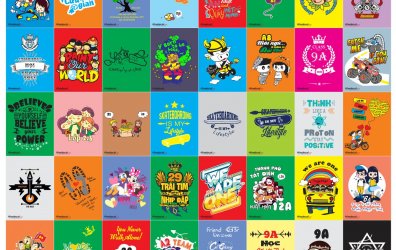M
MUKESH SHARMA
So, I’ve been running a few campaigns in the gambling advertising space for a while, and lately, I’ve been wondering if there’s a smarter way to guide people from that first ad click all the way to sign-up or deposit. Someone mentioned “funnel mapping” in a thread I stumbled on last month, and honestly, it sounded like just another buzzword. But after experimenting with it, I can see why it gets mentioned so often.
At first, I didn’t quite get what “funnel mapping” was supposed to do for gambling ads. My usual setup was pretty straightforward: get traffic → send to landing page → hope for conversions. The problem? The drop-off rate between clicks and actual conversions was brutal. People would click, browse for a second, and bounce. No matter how catchy the ad copy was or how clean the page looked, the numbers weren’t moving.
That’s when I realized I wasn’t really “guiding” users — I was just throwing them into the deep end. Gambling advertising, unlike other niches, is tricky because the intent behind a click can vary so much. Some people are just curious, others are comparison shopping, and only a few are actually ready to play. Without a structured path, you’re treating everyone the same — which is kind of the problem.
So, I started reading up on how funnel mapping actually works. The concept is simple: you visualize your customer’s journey from awareness to conversion. You figure out what message or touchpoint belongs at each stage. I mapped mine out roughly on paper first. For example:
The first change I noticed was how much smoother my data looked. I wasn’t just tracking conversions anymore — I could see where people dropped off and why. For instance, one of my mid-funnel pages had too many CTAs and a confusing layout. Before funnel mapping, I wouldn’t have even noticed that as a key issue.
The other cool thing was that it made collaboration with my ad team much easier. When everyone can see how the funnel works, it’s no longer a guessing game. You can tweak one step without breaking the others. We started making small experiments, like testing softer entry points (quizzes, polls, or mini-games) for top-of-funnel users. The engagement improved noticeably.
Of course, not everything clicked right away. My first few funnel drafts were too long — people got bored halfway through. I also underestimated how important the messaging consistency was. If your awareness ad feels playful but your landing page suddenly feels corporate, it breaks trust. Once I made sure the tone stayed consistent, conversions started picking up.
What surprised me most is that funnel mapping doesn’t just increase conversions — it also helps with compliance. Since you’re more intentional about your ad flow, it’s easier to keep messaging within acceptable limits for gambling platforms. Less risk, better user experience.
I still wouldn’t call myself an expert in this stuff, but I can say that having a mapped-out funnel gave me clarity. It feels less like guessing and more like planning. For anyone in gambling advertising who’s struggling with inconsistent results, I’d definitely suggest looking into funnel mapping. You don’t need fancy tools at first — even a whiteboard sketch helps you see where your audience might be dropping off.
If you’re curious about how others are applying it or want a simple example of how a funnel can be structured for this niche, this article breaks it down nicely: Increase Conversions with Funnel Mapping. It’s not one of those overly technical reads — just practical advice that you can test out without needing a marketing degree.
In short, funnel mapping gave my gambling campaigns a sense of direction. Instead of hoping users convert, I can actually see the stages leading up to that point and optimize accordingly. It’s not magic, but it definitely makes a difference when you stop treating every click the same.
So yeah, if you’ve been dealing with uneven campaign results or can’t figure out why people keep bouncing before they sign up, mapping out your funnel might be worth the try. It’s not glamorous work — but once you start seeing where the leaks are, it’s oddly satisfying to patch them up.
Anyone else here tried funnel mapping for gambling advertising? Would love to hear if your results were as surprising as mine.
At first, I didn’t quite get what “funnel mapping” was supposed to do for gambling ads. My usual setup was pretty straightforward: get traffic → send to landing page → hope for conversions. The problem? The drop-off rate between clicks and actual conversions was brutal. People would click, browse for a second, and bounce. No matter how catchy the ad copy was or how clean the page looked, the numbers weren’t moving.
That’s when I realized I wasn’t really “guiding” users — I was just throwing them into the deep end. Gambling advertising, unlike other niches, is tricky because the intent behind a click can vary so much. Some people are just curious, others are comparison shopping, and only a few are actually ready to play. Without a structured path, you’re treating everyone the same — which is kind of the problem.
So, I started reading up on how funnel mapping actually works. The concept is simple: you visualize your customer’s journey from awareness to conversion. You figure out what message or touchpoint belongs at each stage. I mapped mine out roughly on paper first. For example:
- Awareness stage: light curiosity ads or soft offers (“Try your luck today”).
- Interest stage: landing pages that explain bonuses, trust factors, or testimonials.
- Decision stage: retargeting ads for people who clicked but didn’t convert — something like “Still thinking? Your free spins are waiting.”
The first change I noticed was how much smoother my data looked. I wasn’t just tracking conversions anymore — I could see where people dropped off and why. For instance, one of my mid-funnel pages had too many CTAs and a confusing layout. Before funnel mapping, I wouldn’t have even noticed that as a key issue.
The other cool thing was that it made collaboration with my ad team much easier. When everyone can see how the funnel works, it’s no longer a guessing game. You can tweak one step without breaking the others. We started making small experiments, like testing softer entry points (quizzes, polls, or mini-games) for top-of-funnel users. The engagement improved noticeably.
Of course, not everything clicked right away. My first few funnel drafts were too long — people got bored halfway through. I also underestimated how important the messaging consistency was. If your awareness ad feels playful but your landing page suddenly feels corporate, it breaks trust. Once I made sure the tone stayed consistent, conversions started picking up.
What surprised me most is that funnel mapping doesn’t just increase conversions — it also helps with compliance. Since you’re more intentional about your ad flow, it’s easier to keep messaging within acceptable limits for gambling platforms. Less risk, better user experience.
I still wouldn’t call myself an expert in this stuff, but I can say that having a mapped-out funnel gave me clarity. It feels less like guessing and more like planning. For anyone in gambling advertising who’s struggling with inconsistent results, I’d definitely suggest looking into funnel mapping. You don’t need fancy tools at first — even a whiteboard sketch helps you see where your audience might be dropping off.
If you’re curious about how others are applying it or want a simple example of how a funnel can be structured for this niche, this article breaks it down nicely: Increase Conversions with Funnel Mapping. It’s not one of those overly technical reads — just practical advice that you can test out without needing a marketing degree.
In short, funnel mapping gave my gambling campaigns a sense of direction. Instead of hoping users convert, I can actually see the stages leading up to that point and optimize accordingly. It’s not magic, but it definitely makes a difference when you stop treating every click the same.
So yeah, if you’ve been dealing with uneven campaign results or can’t figure out why people keep bouncing before they sign up, mapping out your funnel might be worth the try. It’s not glamorous work — but once you start seeing where the leaks are, it’s oddly satisfying to patch them up.
Anyone else here tried funnel mapping for gambling advertising? Would love to hear if your results were as surprising as mine.




